Physical Address
304 North Cardinal St.
Dorchester Center, MA 02124
Craniofacial malformations have characteristic osseous and soft tissue features, which lead to visible deformity. In addition, these anomalies can lead to loss of normal function of hearing, swallowing, and vision.
These malformations frequently involve combinations of craniofacial locations.
Several craniofacial malformations have known genetic causes. The most common genetic abnormality involves the fibroblast growth factor.


CT imaging with 3D reconstruction is the modality of choice. Although currently limited to research investigations, black bone MRI using an ultrashort TE sequence is a potential future alternative to CT.
Because craniofacial malformations frequently involve multiple anatomic sites, an evaluation of craniofacial malformations requires a systematic assessment of the calvarium, orbits, nose, palate, maxilla, mandible, temporal bone, and spine.
Once the combination of anomalies or a characteristic anomaly is identified, a diagnosis is often achieved.
This section illustrates the congenital and acquired orbital and craniofacial malformations and clues to the diagnosis.
Craniosynostosis is the premature fusion of the cranial sutures.
Craniosynostosis is categorized as single or multiple and syndromic or nonsyndromic. Syndromic craniosynostosis is associated with other anomalies of the face, trunk and/or extremities.
There is an association between craniosynostosis and intracranial hypertension, particularly in complex or syndromic craniosynostosis. However, no correlation between craniosynostosis and hydrocephalus has been established.
Craniosynostosis has been shown to be associated with altered brain morphology but not overall brain volume. These alteration may account for observed problems with language, attention, information processing, and visual spatial skills.
Etiology unknown; 15% are syndromic causes, most commonly due to FGFR, TWIST1, or MSX2 gene mutations
Secondary causes can include brain malformations and shunting, which lead to altered pressure exerted on the calvarium
CT imaging with 3D reconstruction is the modality of choice.
Ultrasound has been suggested as an alternative modality but is operator dependent and requires user expertise.
Black Bone MRI may emerge in the future as an alternative to CT.
Syndromic craniosynostosis is often associated with jugular foramen stenosis, tonsillar herniation, altered venous drainage, and accessory transosseous venous drainage, which may impact surgical approach.
Plagiocephaly which refers to flattening of the skull is often imaged to assess for craniosynostosis but is most commonly due to positional flattening that occurs in infants from laying asymmetrically on one side of the posterior calvarium rather than fusion of a suture.
Normal fusion of the metopic suture occurs at 6 to 9 months
Premature fusion results in trigonocephaly +/− hypotelorism
Metopic craniosynostosis occurs in ~25% of nonsyndromic craniosynostosis cases
Normal fusion of the sagittal suture occurs at ~22 years
Most common craniosynostosis (40% to 60% of craniosynostosis); 45% of nonsyndromic craniosynostosis; 20% of syndromic craniosynostosis
Results in scaphocephaly which is AP elongation and narrowed biparietal distance of the calvarium
The coronal suture normally fuses at ~24 years of age
Unilateral fusion: 25% of nonsyndromic craniosynostosis; results in anterior plagiocephaly, uplifted superolateral corner of the orbit (harlequin eye deformity), contralateral bulging of the frontoparietal skull, “facial twist”, and proptosis
Bilateral fusion: Usually syndromic (i.e., Apert, Crouzon); results in brachycephaly which is a shortening of the skull in AP dimension.
Unilateral fusion results in posterior plagiocephaly; bilateral fusion results in brachycephaly
Unilateral fusion results in an ipsilateral mastoid bulge, contralateral parietal bulge, thickened ridge along the suture, and inferior displacement of the external auditory canal (EAC) which is a useful clinical finding to differentiate from positional plagiocephaly.
Less common than metopic, coronal, and sagittal suture craniosynostosis
Lambdoid suture normally fuses at ~26 years of age
Also known as Kleeblattschadel deformity
Multisuture craniosynostosis (sagittal, coronal, and lambdoid), resulting in a trilobed or cloverleaf pattern
Associated with Apert, Crouzon, and Pfeiffer syndrome
Autosomal dominant; FGFR2 mutation
Varying degrees of developmental delay, mild to moderate intellectual disability
Skull: Bicoronal craniosynostosis resulting in brachycephaly; may have widened metopic suture; harlequin eye deformity
Face: Midface hypoplasia, choanal stenosis, pyriform aperture stenosis, and cleft palate
Intracranial malformations: Callosal agenesis/dysgenesis, ventriculomegaly/hydrocephalus, temporal lobe dysgyria, Chiari I, and venous outflow stenosis
Symmetric syndactyly (fusion) of the hands and feet
Other anomalies: Cervical segmentation anomalies, cardiovascular, respiratory, GI, and GU anomalies

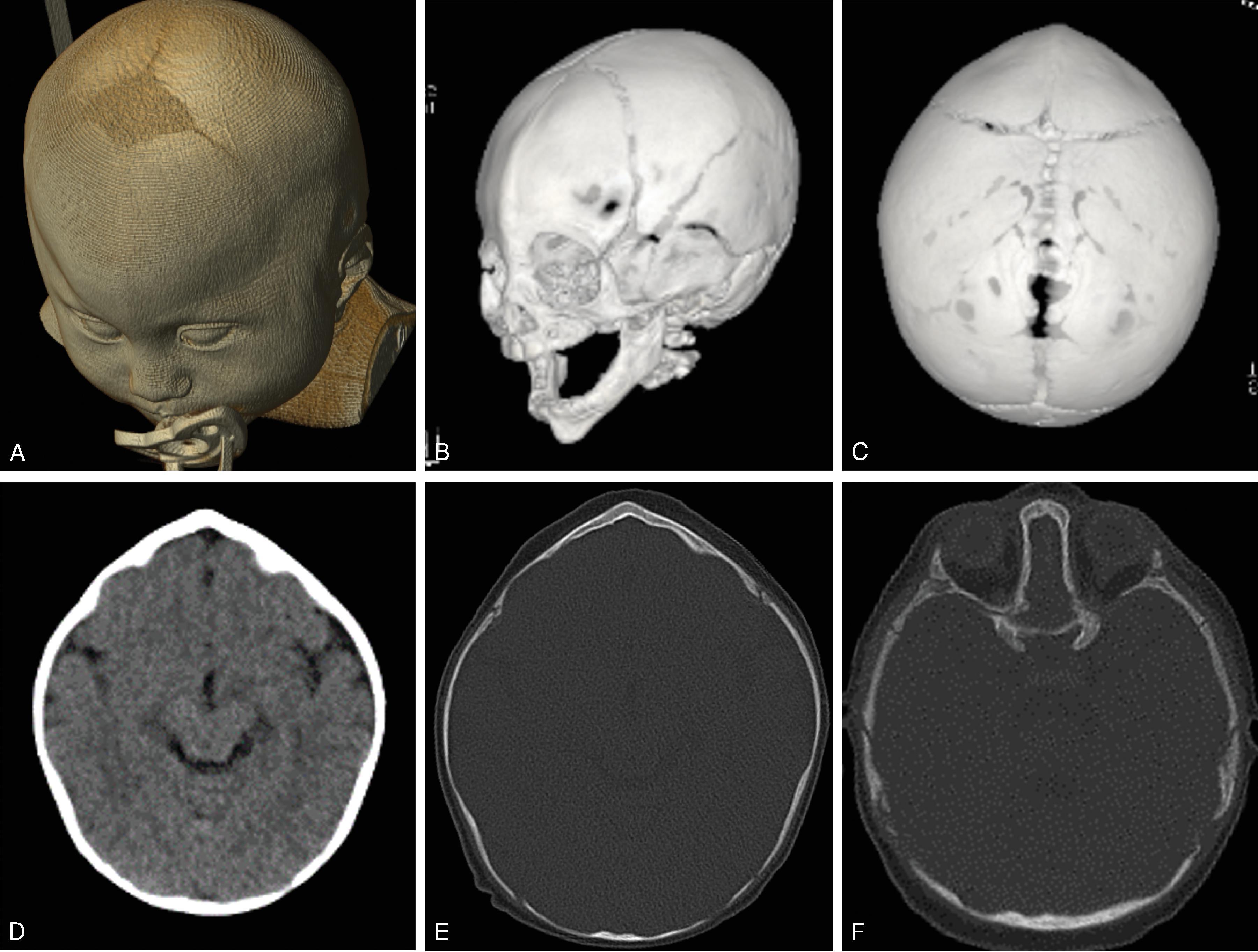
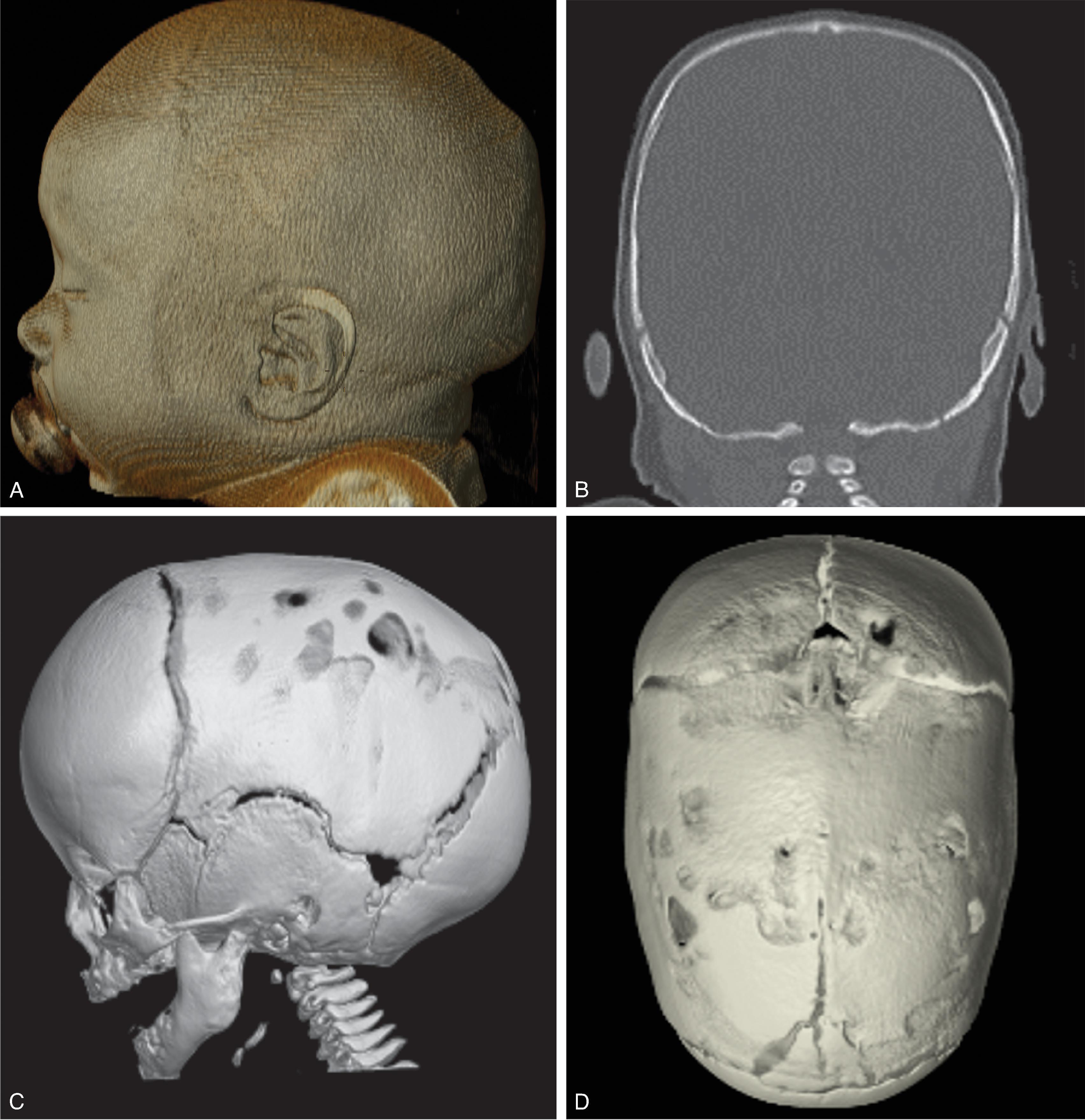
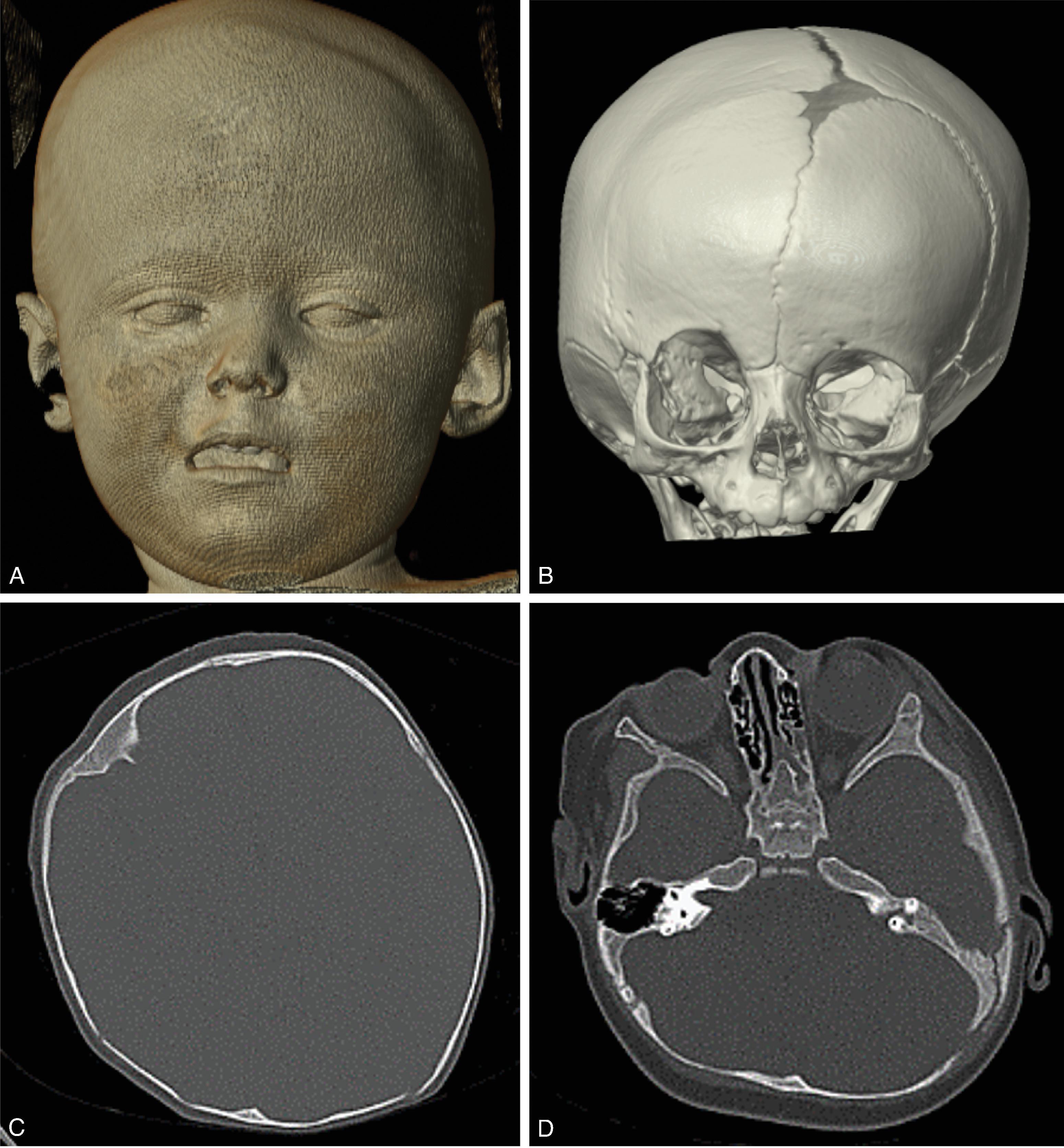
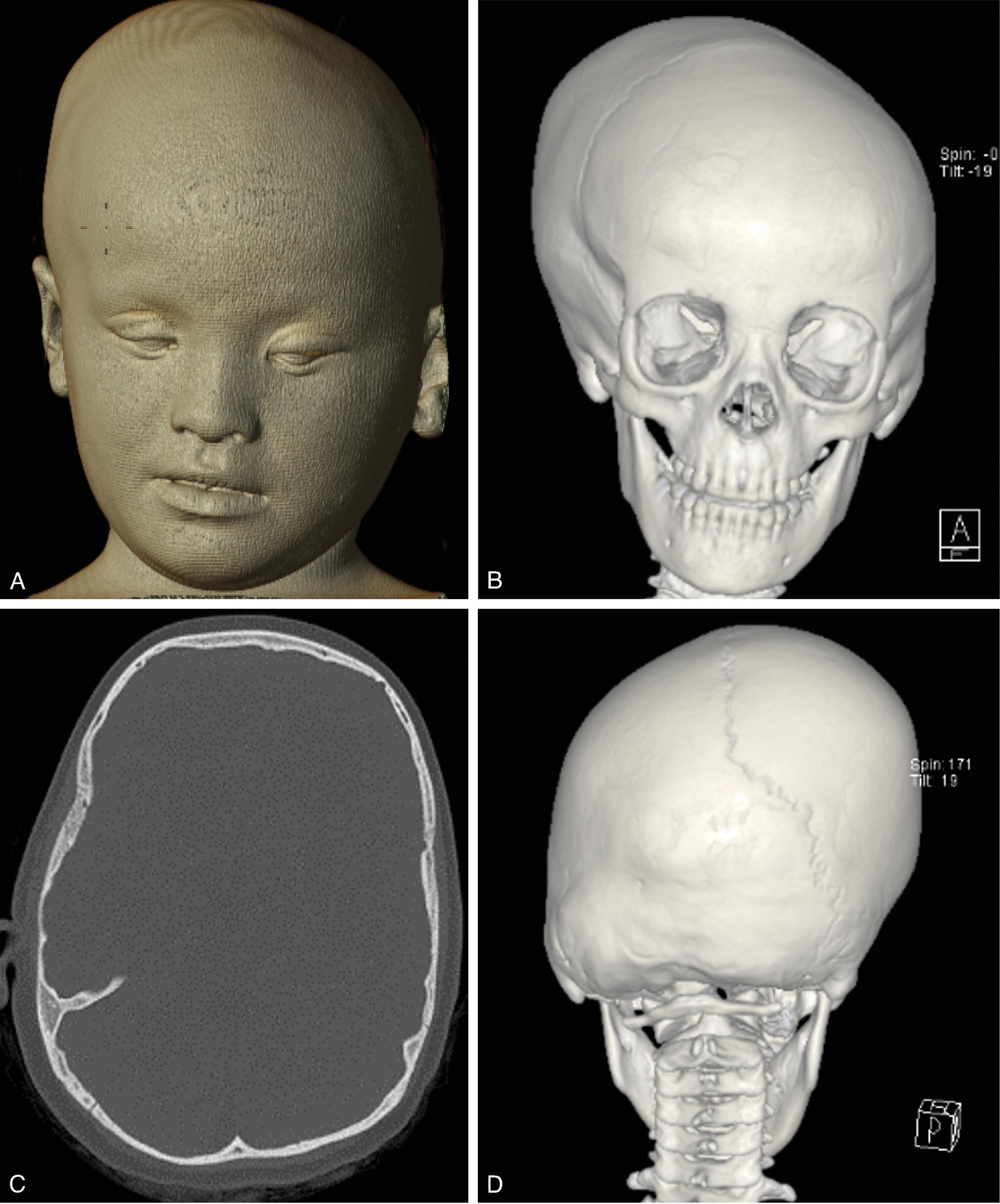
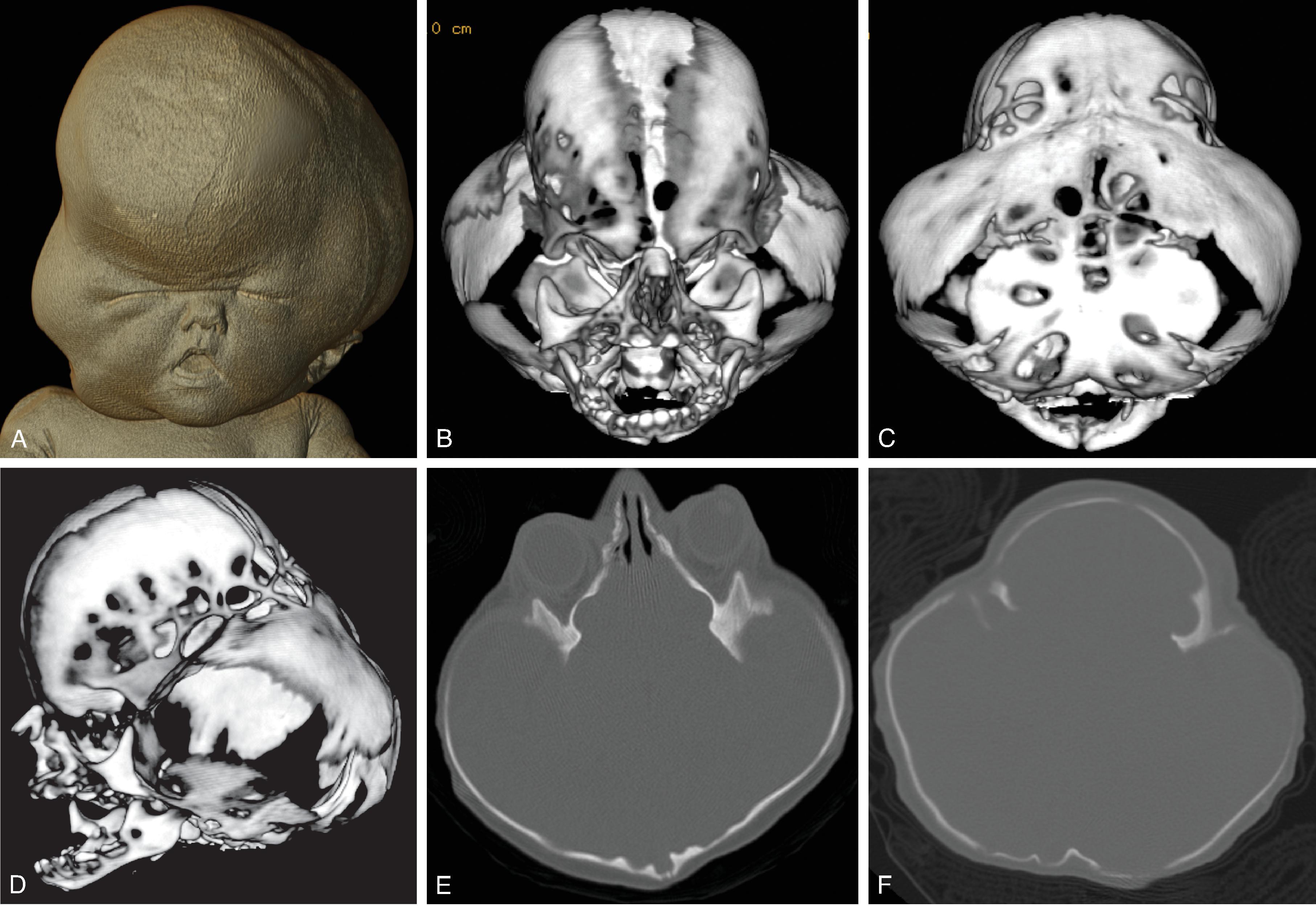
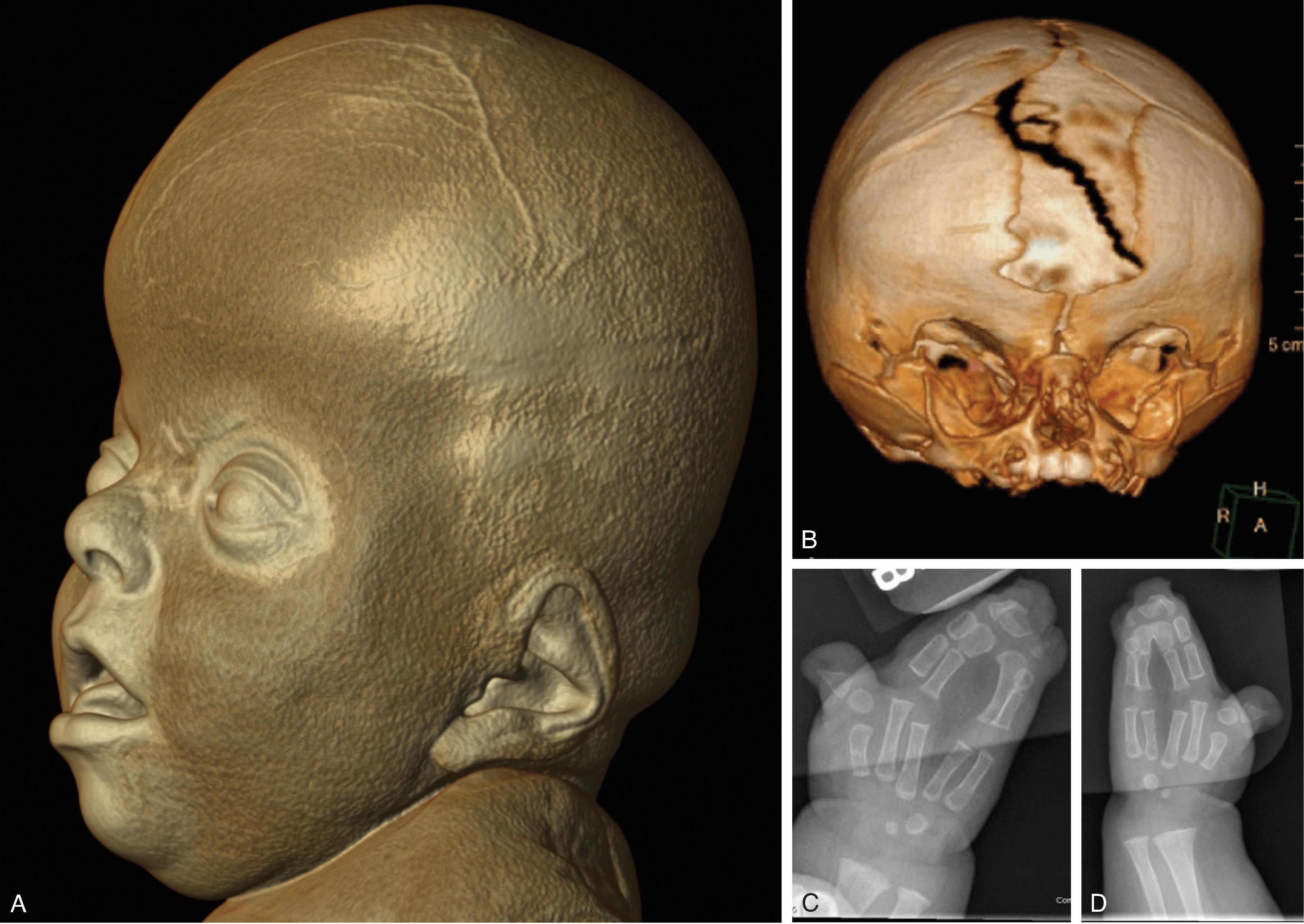
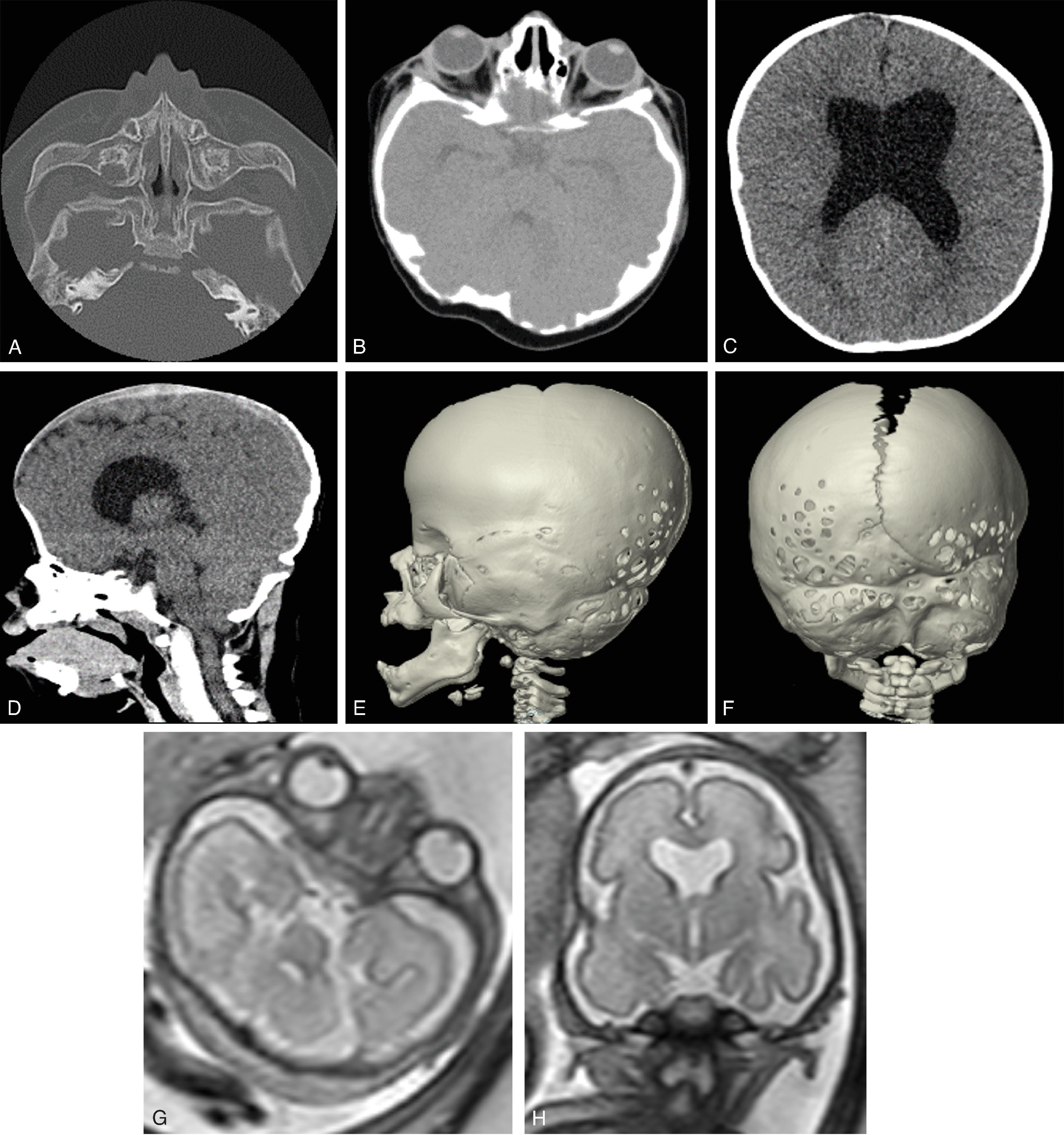
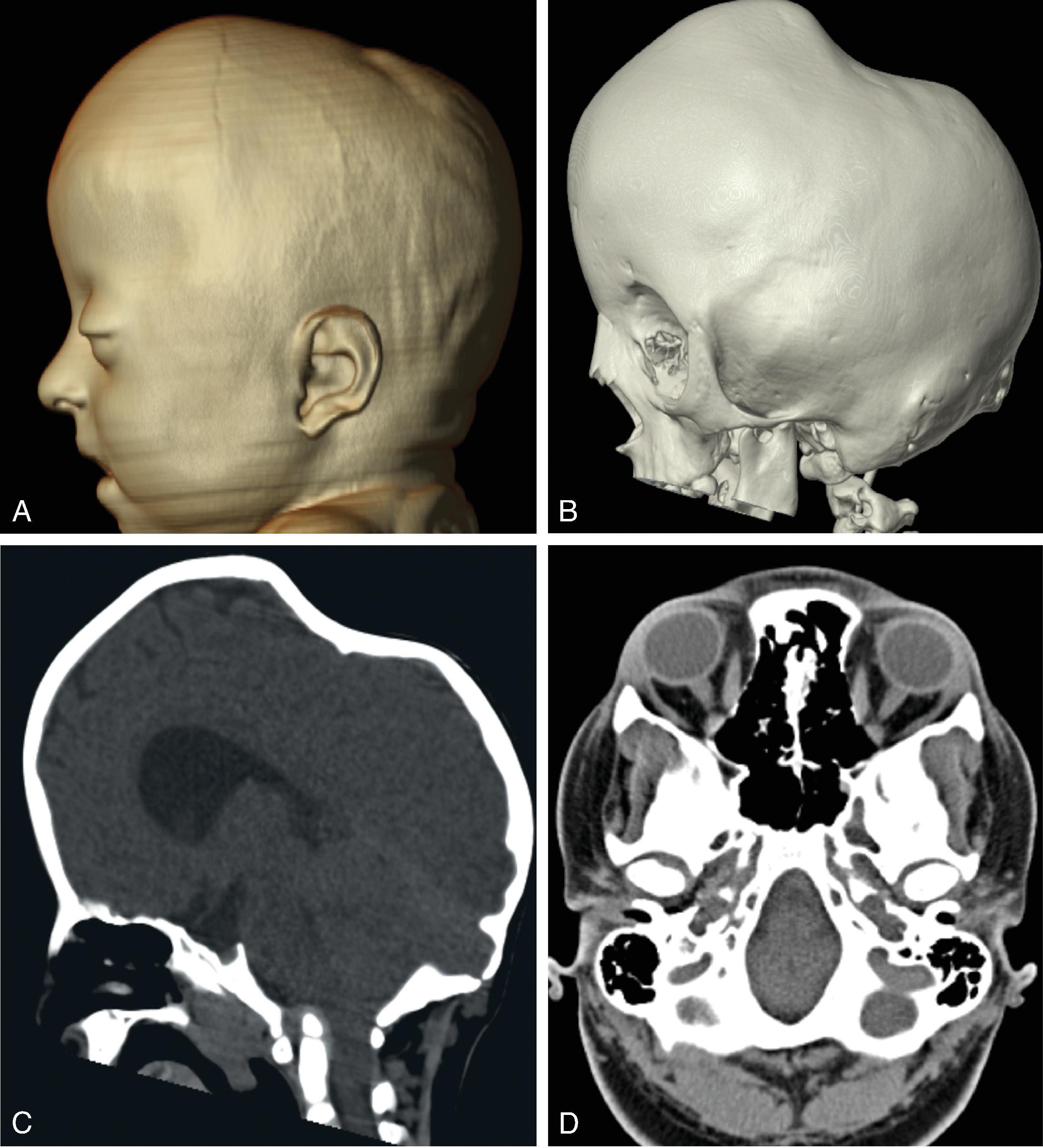
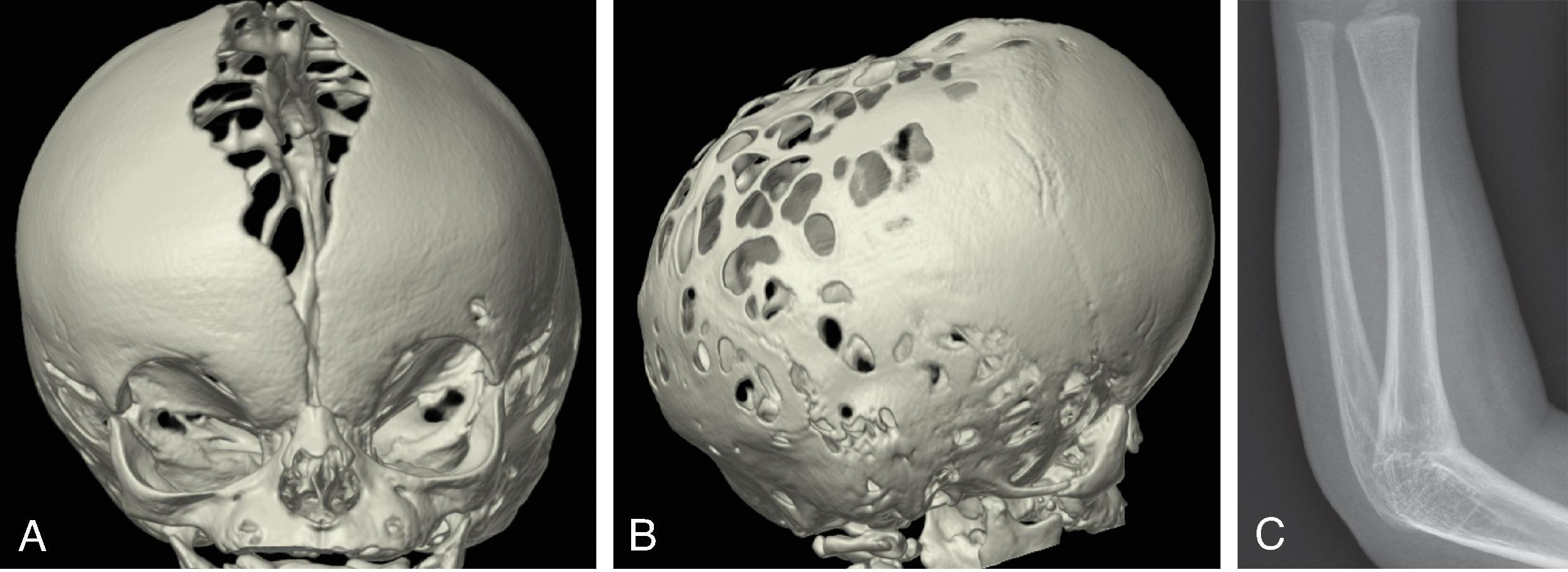
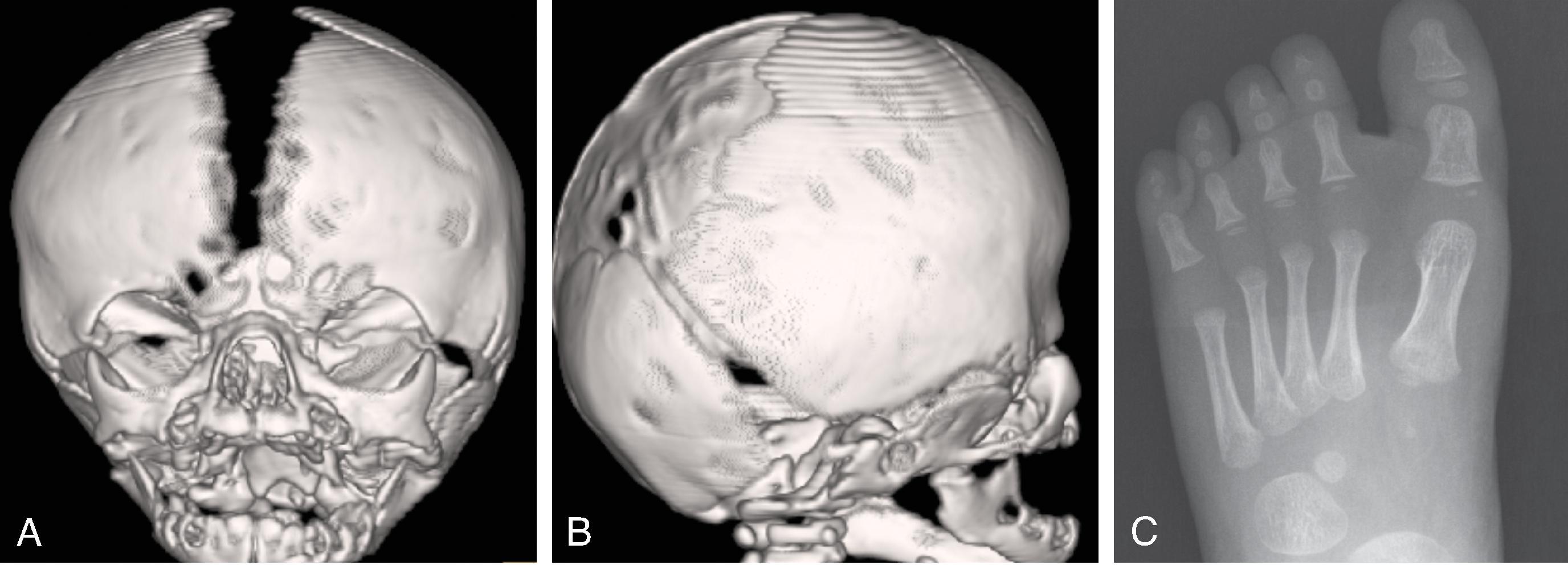

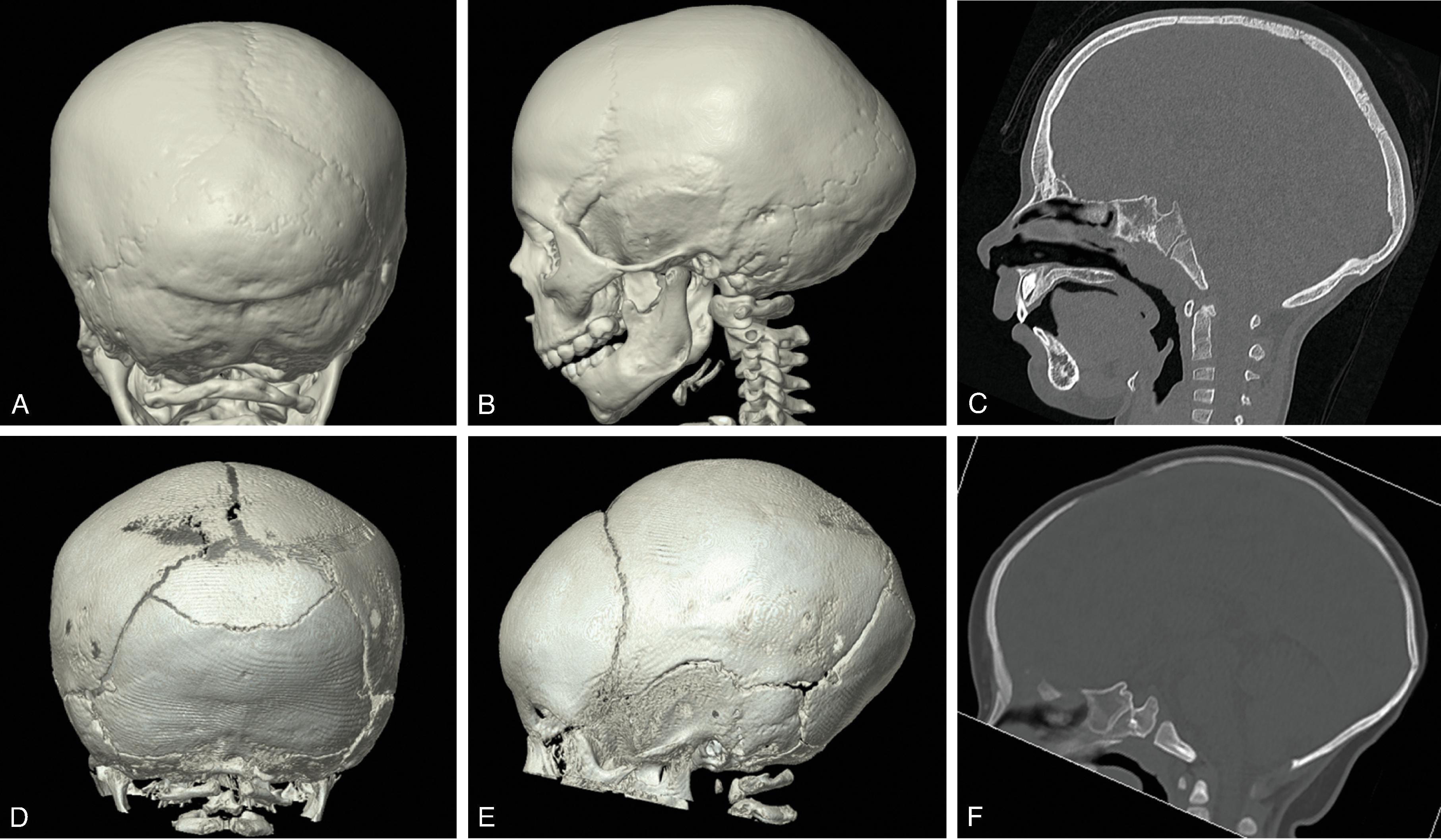
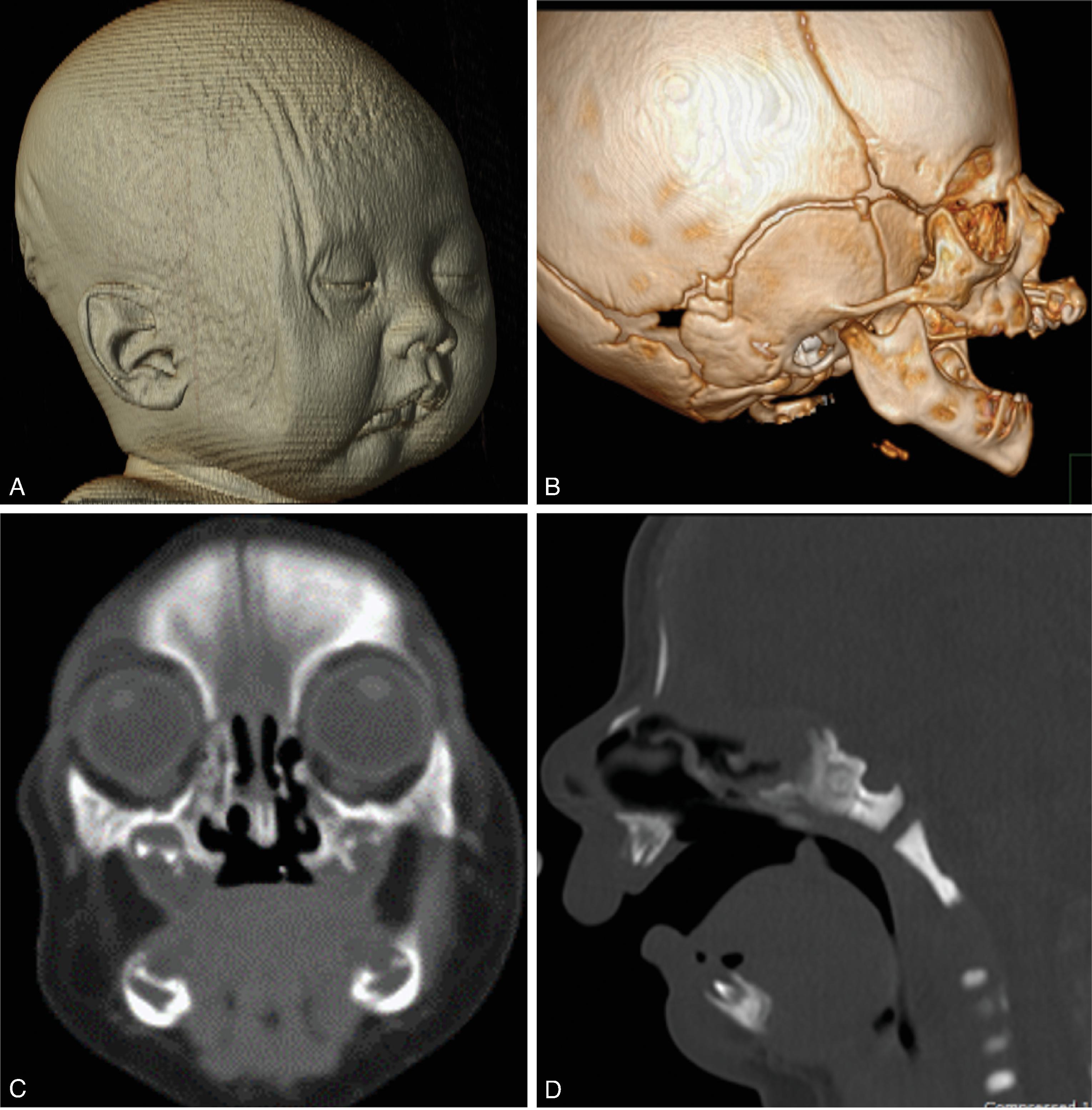
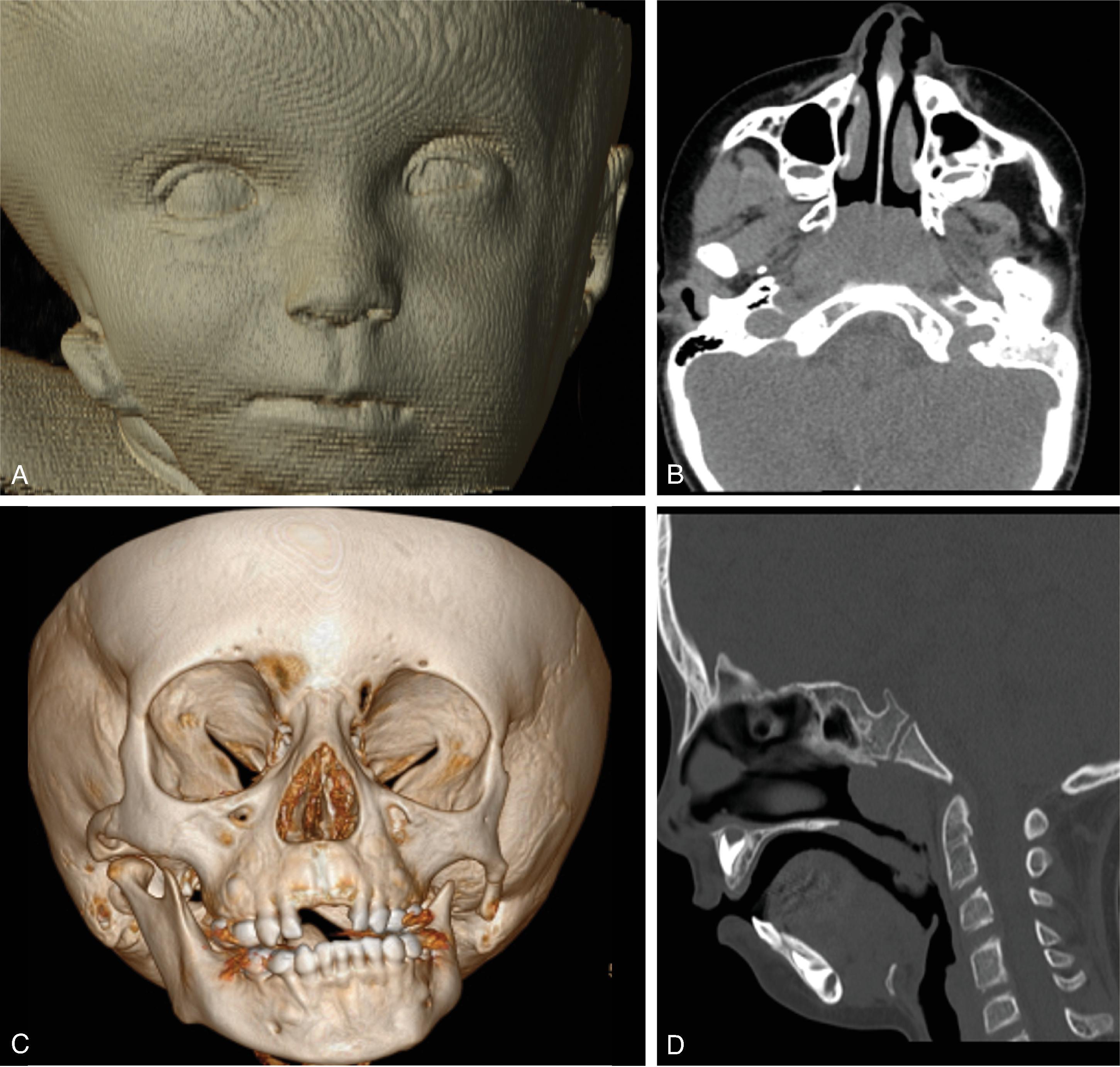
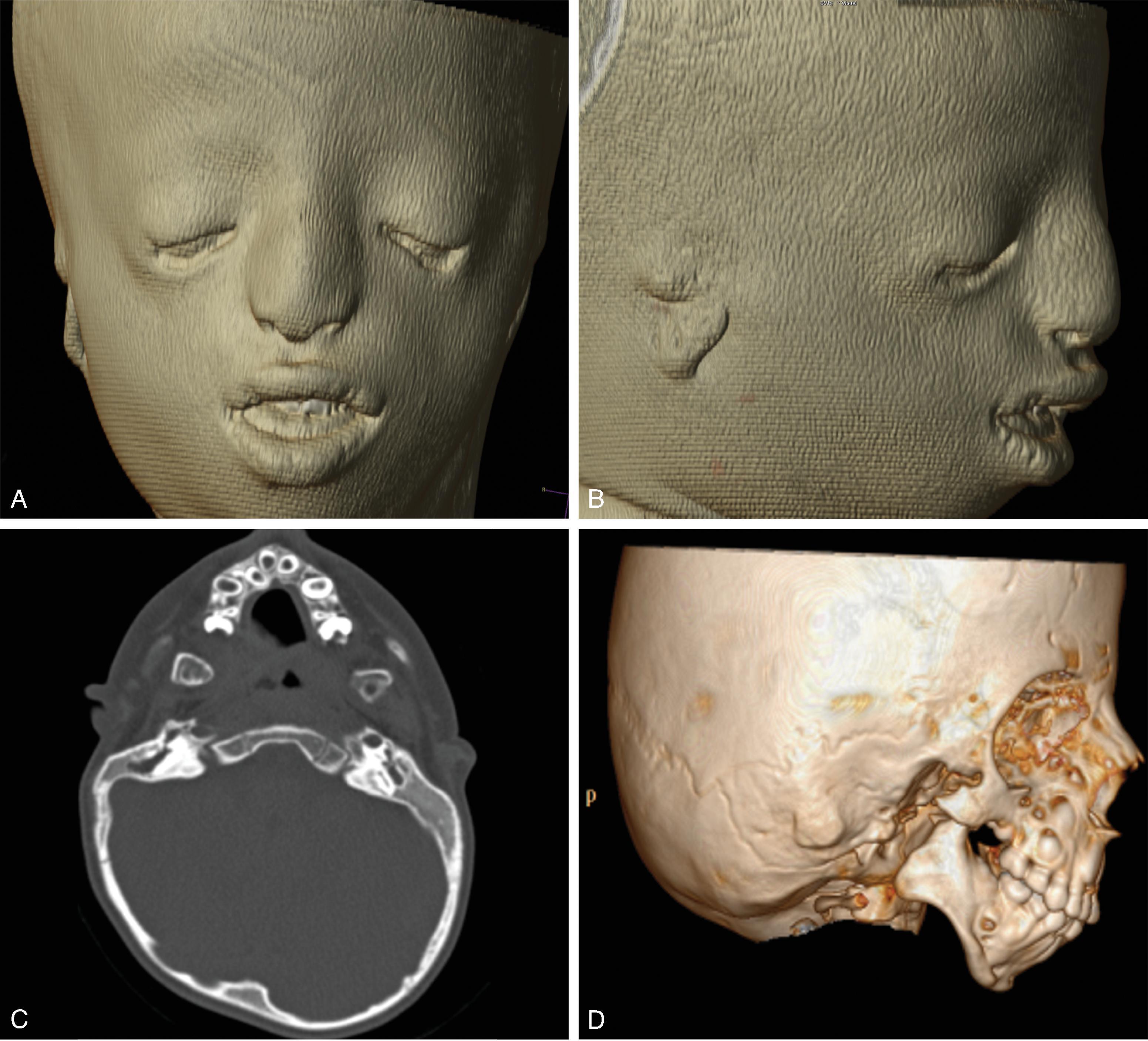
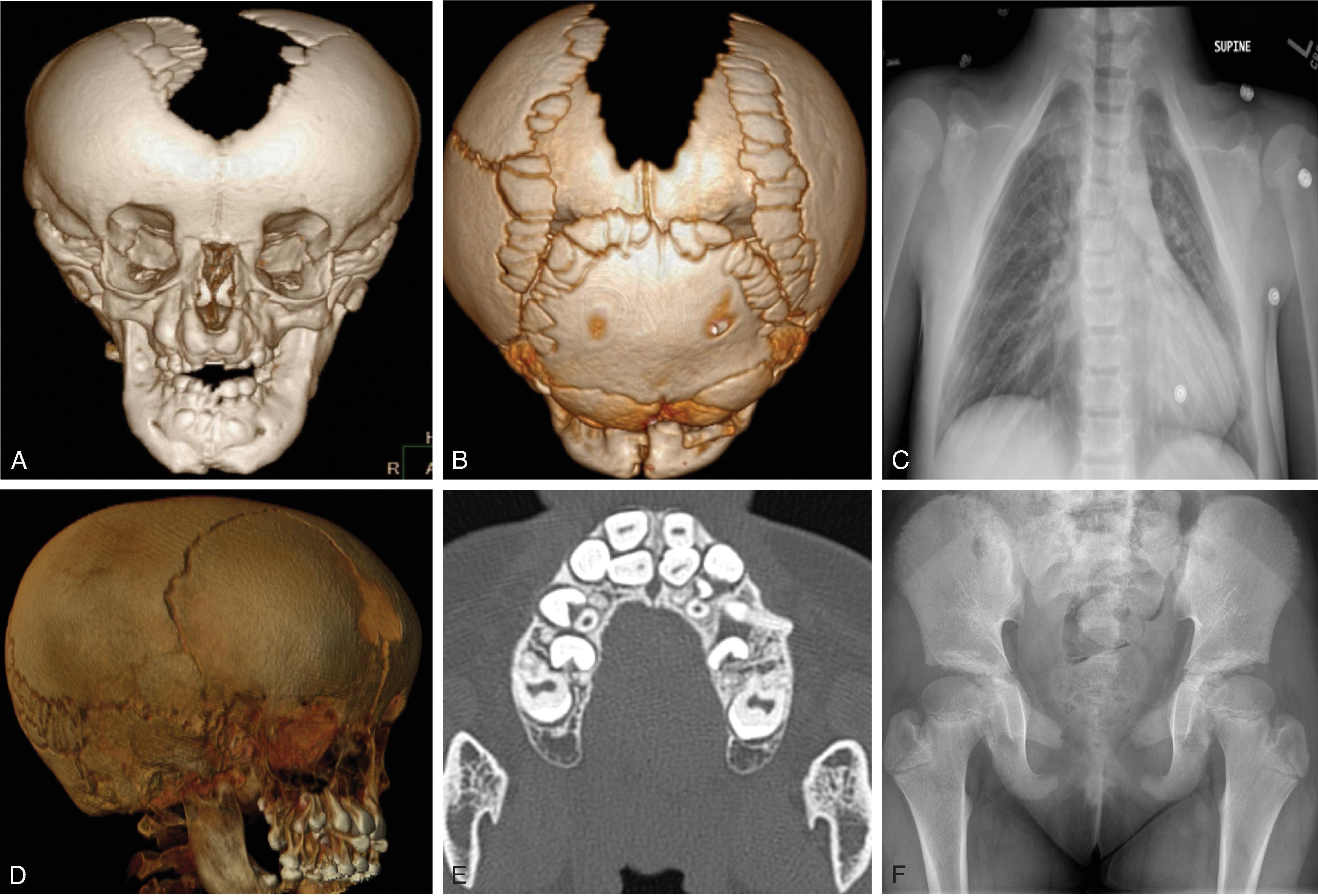

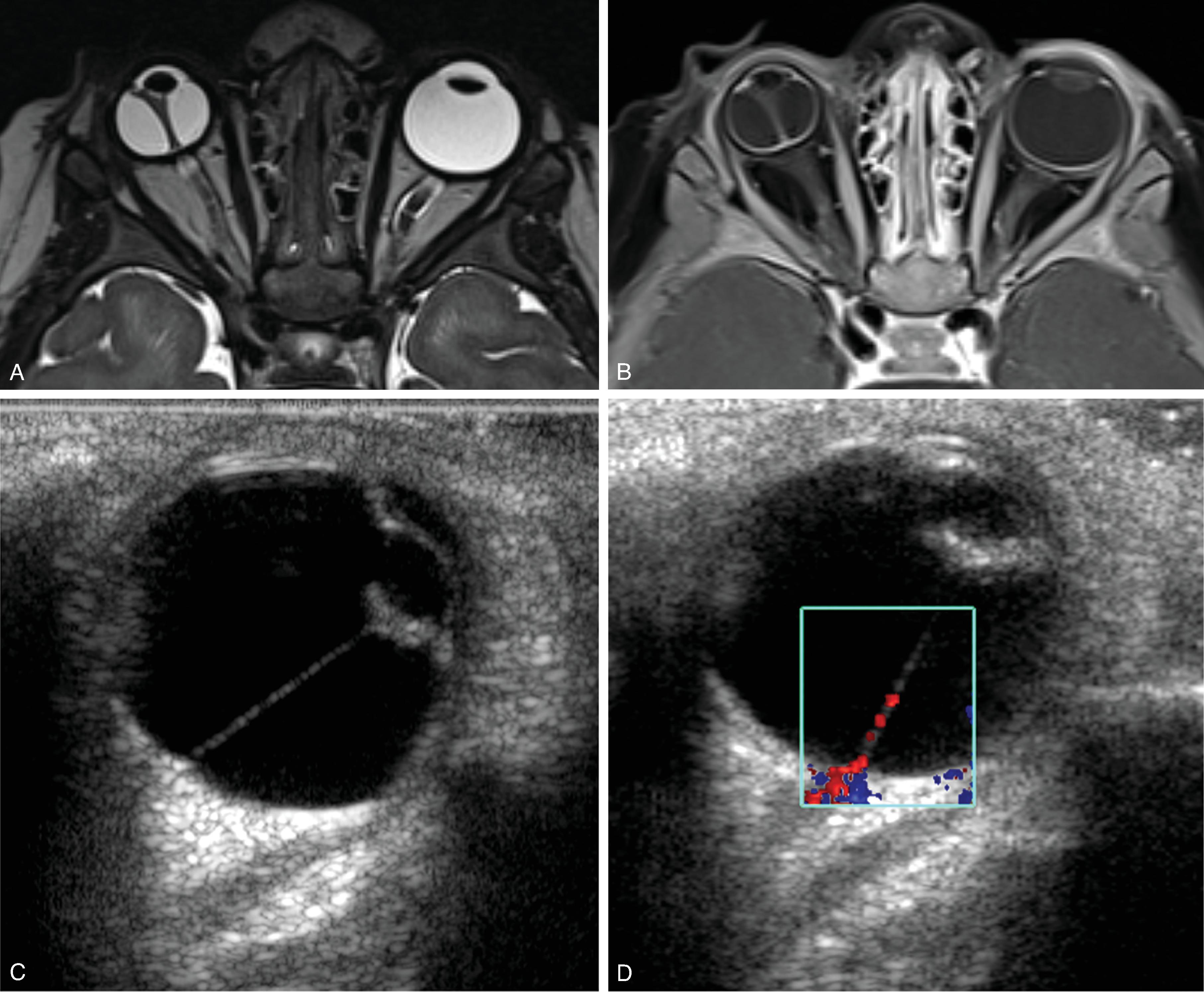
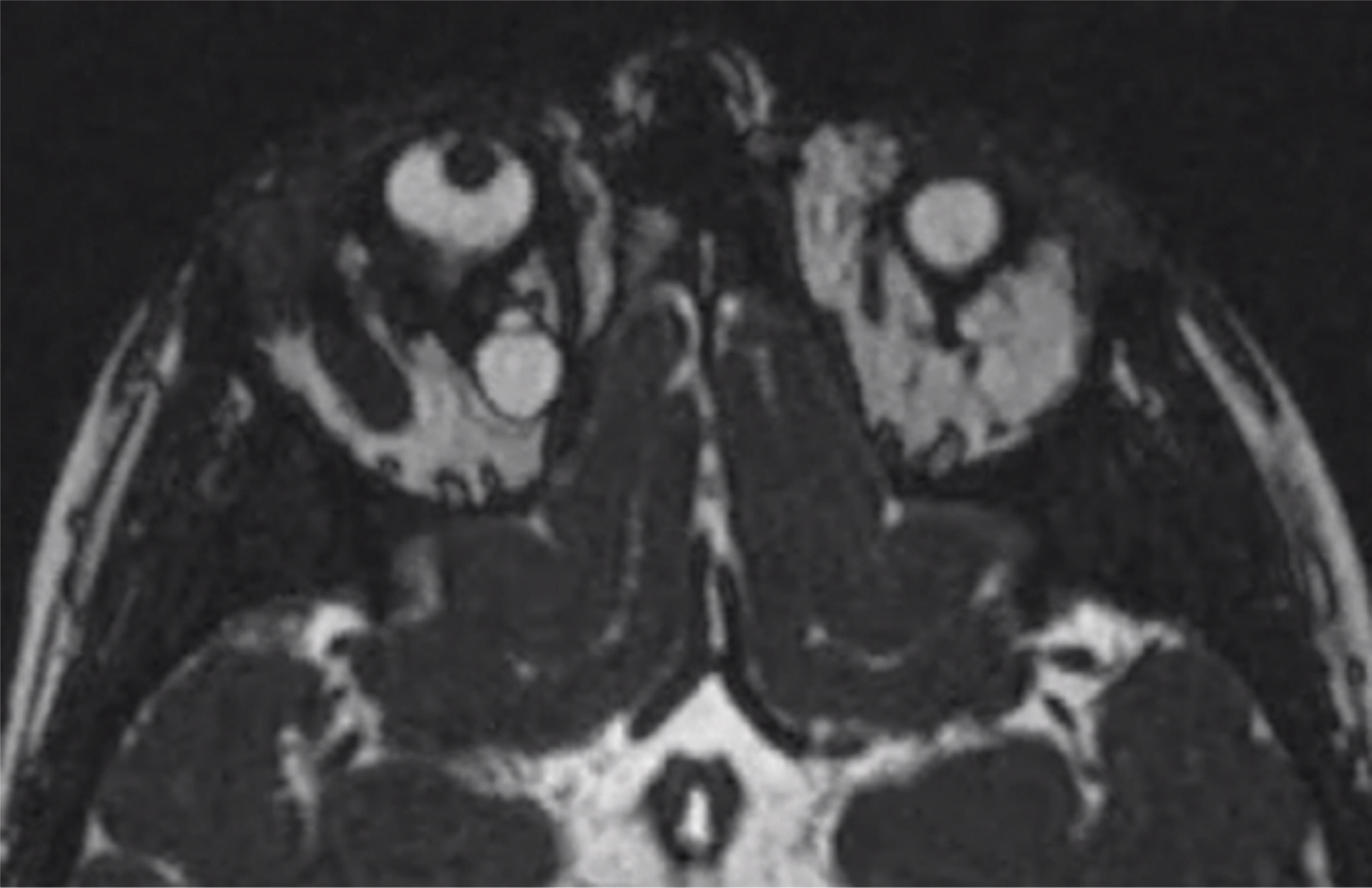
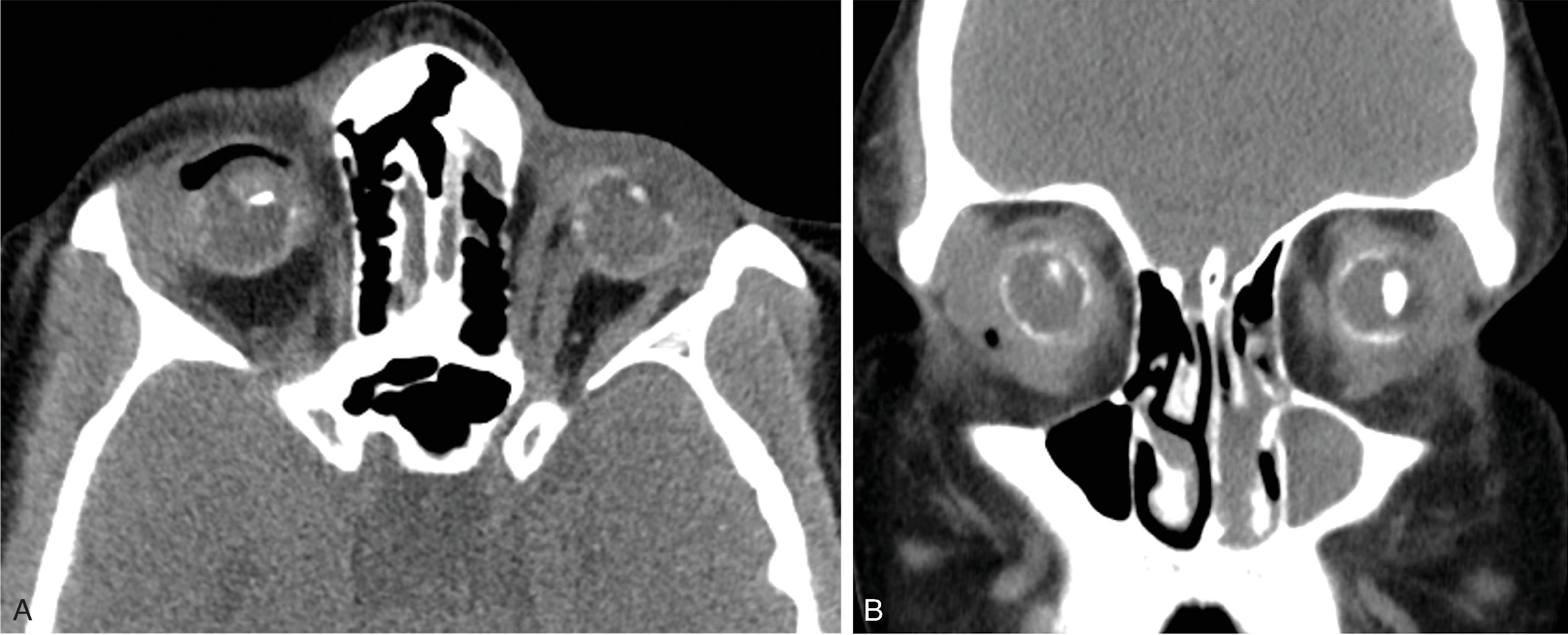

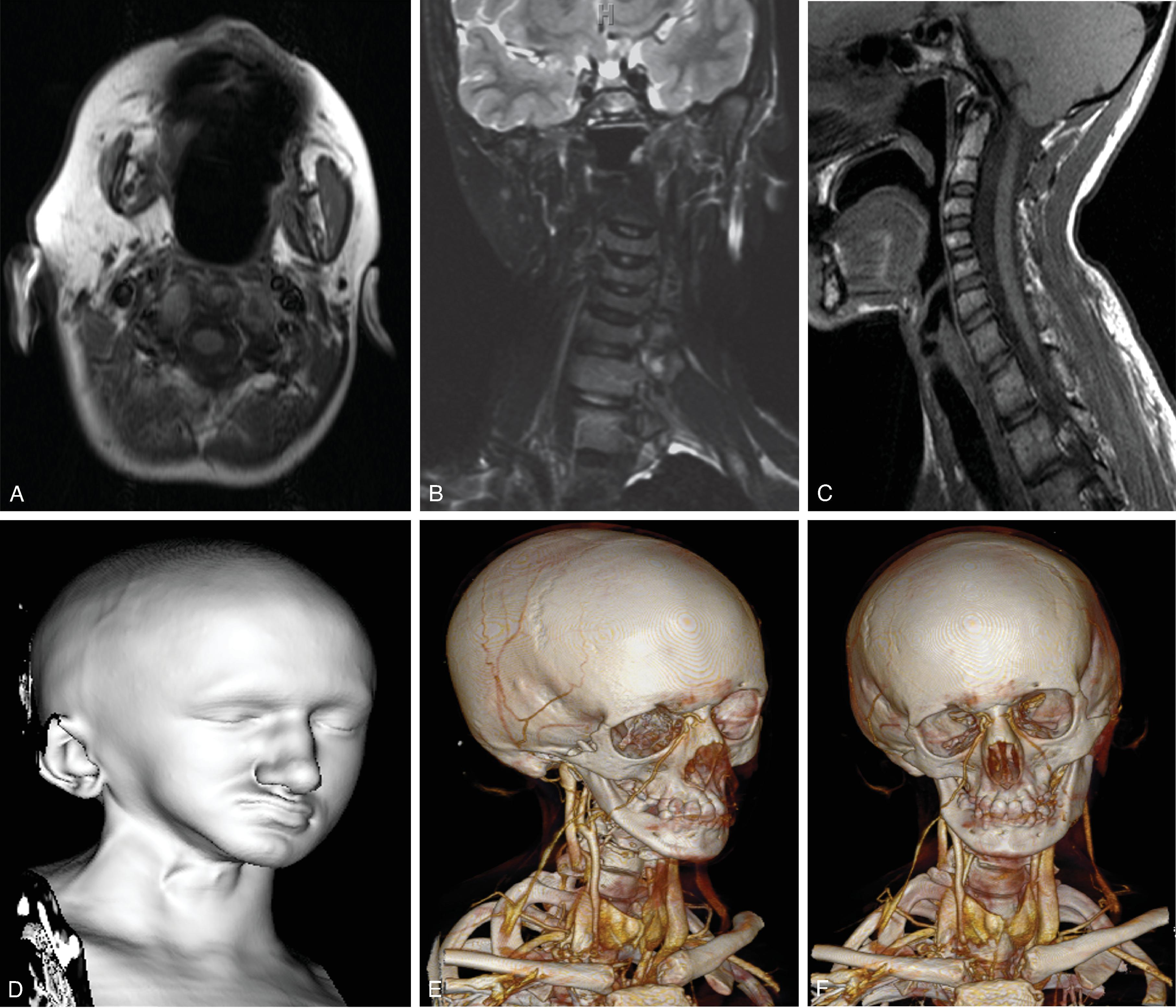
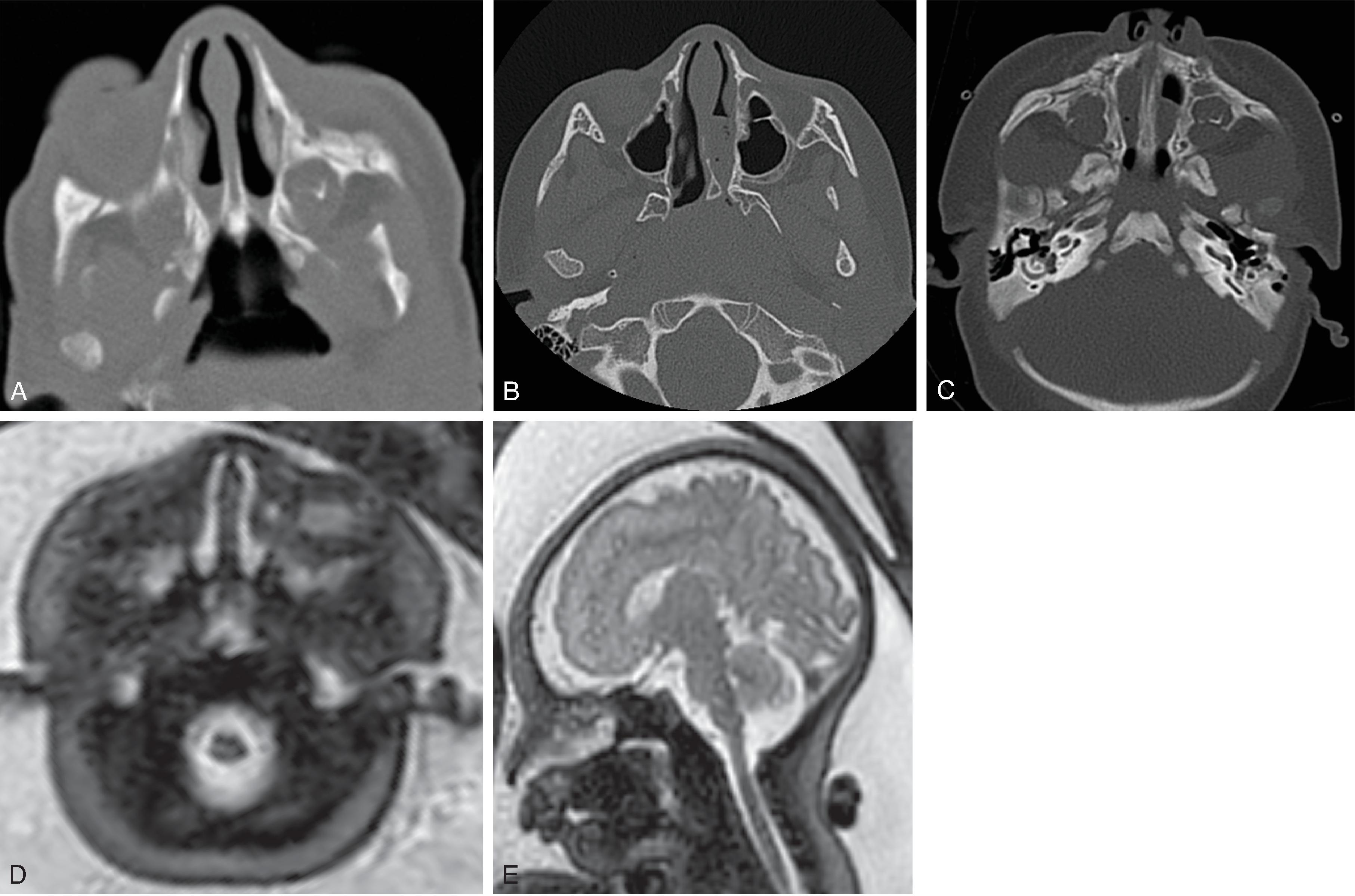
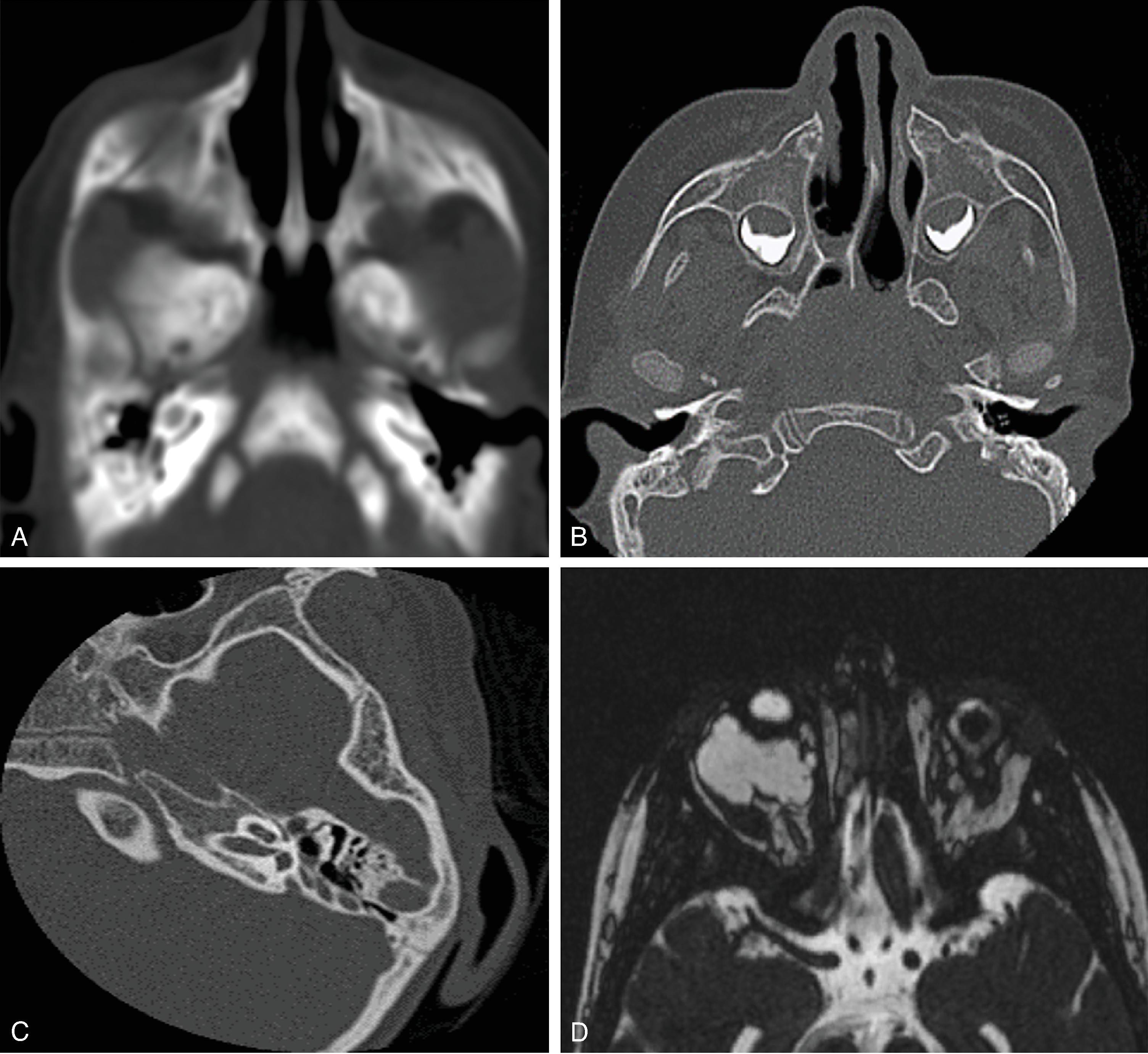
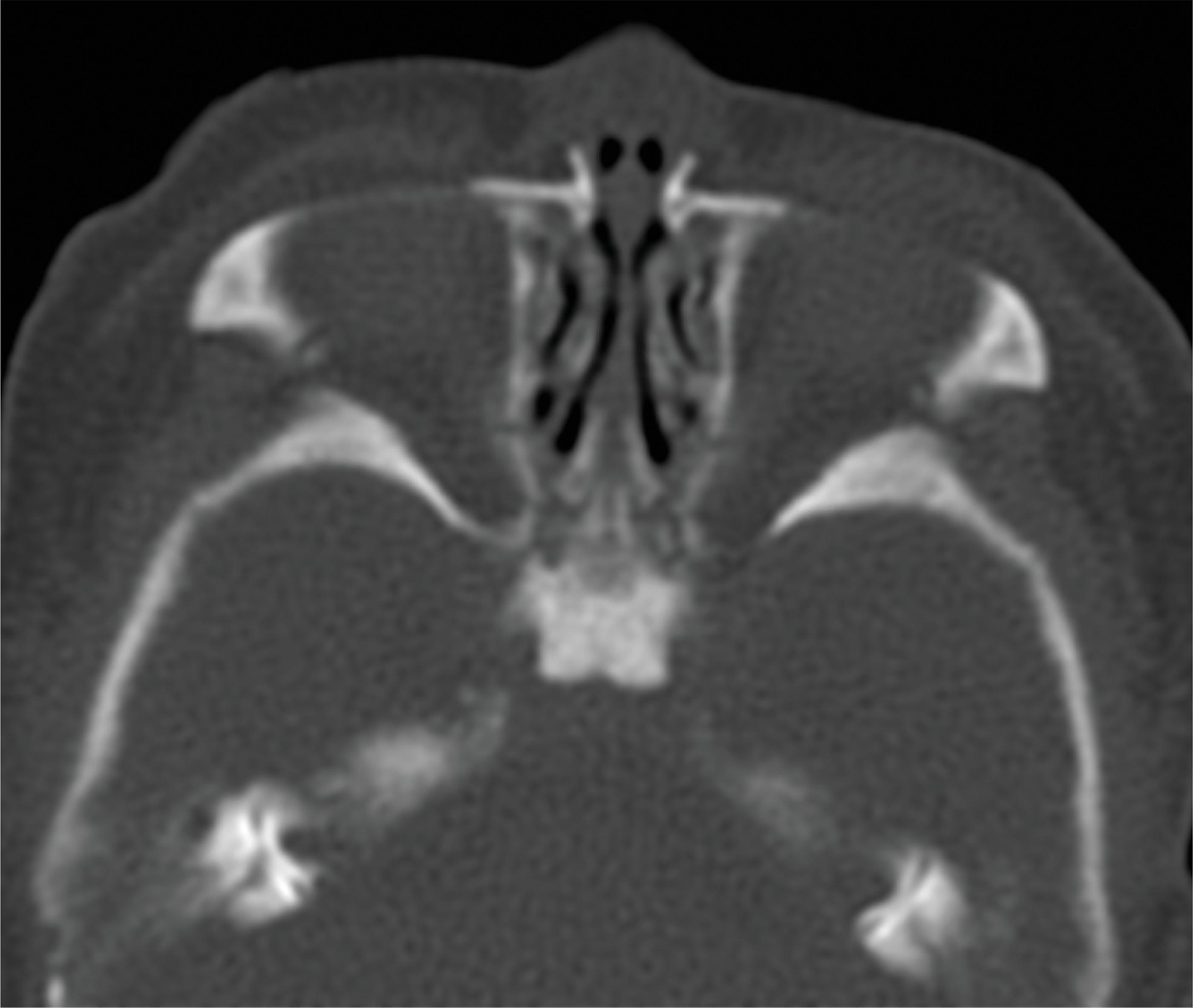
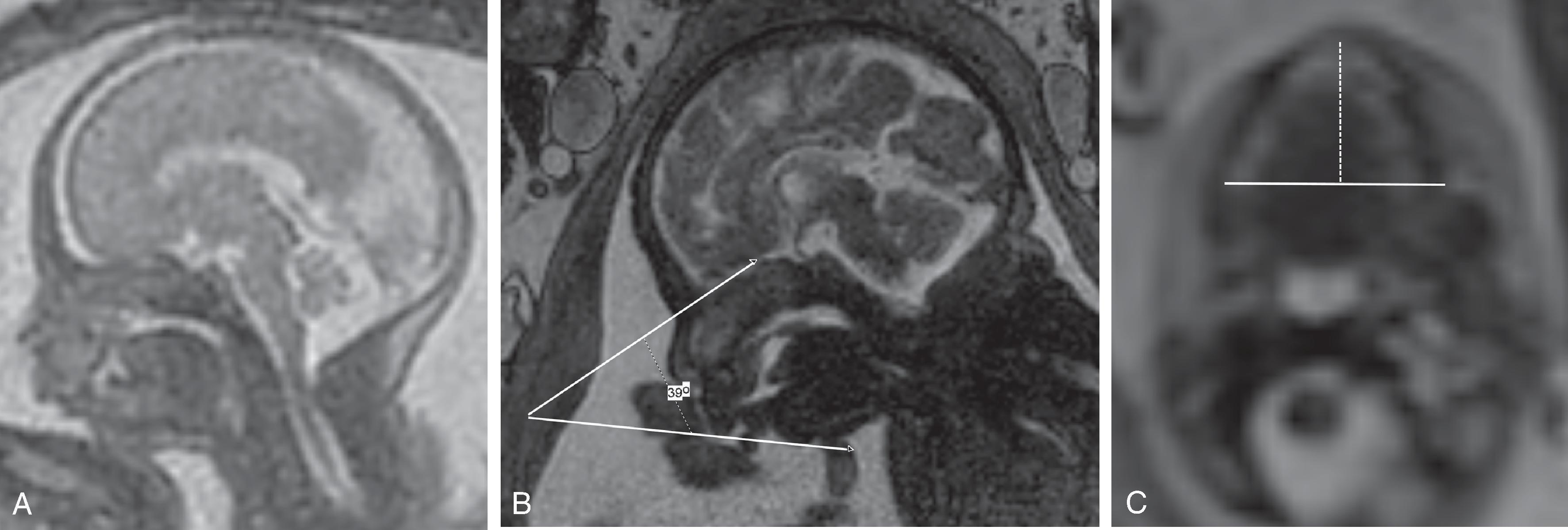
Also known as craniofacial dysostosis
Autosomal dominant. FGRF2 gene mutation;normal intelligence
Skull: Multiple craniosynostosis combinations can be seen resulting in turricephaly, trigonocephaly, brachycephaly, scaphocephaly, and cloverleaf skull
Face: Hypertelorism, shallow orbits, proptosis, maxillary hypoplasia, prognathia, basilar kyphosis, AP narrowing of the nasopharynx, stenosis or atresia of EAC, and cleft palate
Intracranial malformations: midline anomalies including callosal agenesis/dysgenesis, Chiari I, hydrocephalus, venous outflow stenosis/anomalous drainage
Additional anomalies: Cervical segmentation anomalies, stylohyoid ligament calcification, musculoskeletal deformities, and skin lesions
Normal hands and feet
Become a Clinical Tree membership for Full access and enjoy Unlimited articles
If you are a member. Log in here